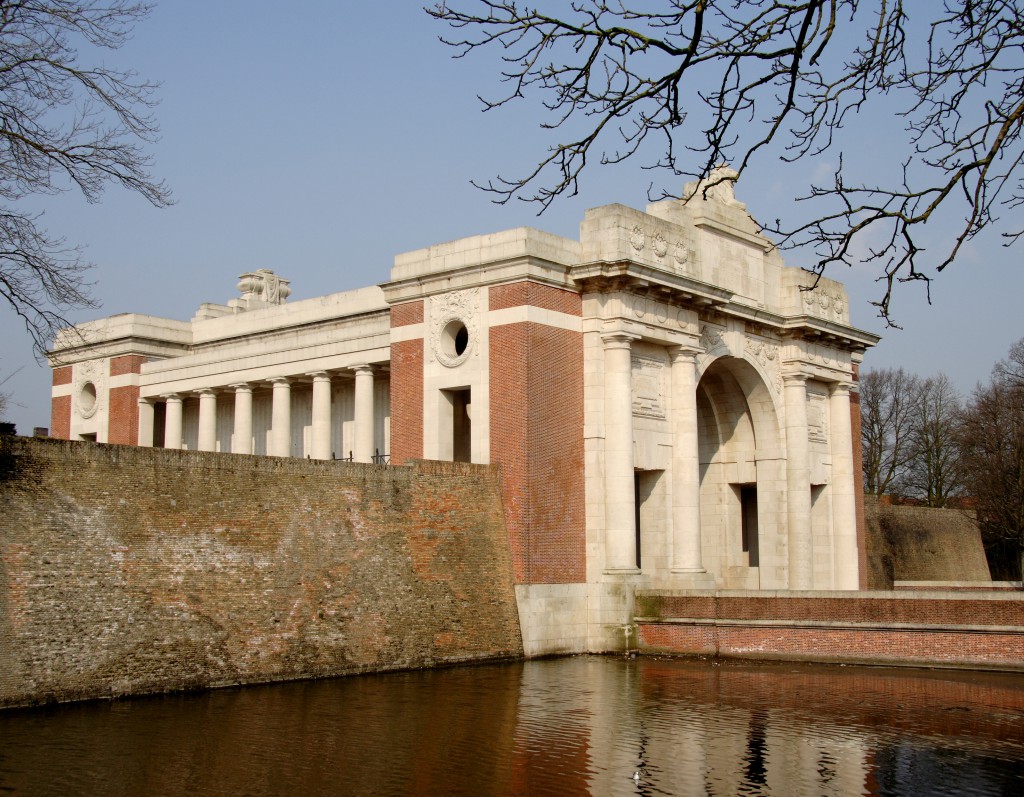John Albert Berry
On March 11, on the road to Estaires amongst the lines of German prisoners and British and Indian wounded, two friends from King Edward VI School met. Lance-Corporal Harry Fox of Bridge Street, who joined the School in 1893 and enlisted in the 1st Warwickshire Battery of the Royal Horse Artillery in August 1914 and Sergeant JOHN ALBERT BERRY of Henley Street who had been a boarder from 1894. Both had enjoyed sport at School, and Fox was to survive the first day of the Battle of the Somme, but after months of active service his health was shattered and he was sent home. Berry had trained as a telegrapher at Stratford Post Office in Sheep Street, moving first to Evesham and then to Leicester where he became a popular figure. At the outbreak of hostilities in August 1914 he enlisted in the 1/1st Leicestershire Yeomanry (Prince Albert’s Own), a reserve unit of the North Midland Mounted Brigade.
The Yeomanry assembled quickly and moved first to the Norfolk market town of Diss and then directly to France, crossing from Southampton on November 3 arriving at Le Havre. By November 18 they had joined the 7 Cavalry Brigade in 3 Cavalry Division and were in the trenches to the west of Ypres. Although they were a cavalry regiment, like many they were not always employed as such. The open warfare of the great German advances of the late summer of 1914 was hardening into a pattern of trench warfare that left little scope for the dashing wide sweeps and patrols beloved of the cavalryman.
The activities of the 1/1 Leicestershire Yeomanry (Prince Albert’s Own), as recorded in their War Diary, reflect a lack of drive and purpose suggesting that a positive role had not yet been found for them during this period of particular pain and hardship for the British Expeditionary Force.
For the next months, the men of the Yeomanry spent much of their time training and improving their fitness with route marches, or improving their trenches – these were bad, five feet deep and two and a half feet wide at the bottom, with the sloping parapets made of loose soil. There were few sandbags and no dug- outs or other protection from shell-fire. Although they certainly came under fire and were rarely far from danger, much more time was spent out of, rather than in, the forward area trenches, and their casualties remained very light.
A foretaste of future events was received on April 26 well behind the front line, when they were driven from their billets in Vlamertinghe by a heavy artillery barrage that virtually destroyed the village.
At 8:30am on May 9 1915, a message was received that the Germans were advancing rapidly on the British lines, and making destructive use of poison gas. Leaving its horses behind, the Yeomanry was rushed to billets in the small village of Brielen, one kilometre from Ypres, where through the night over two hundred men reinforced their reserve positions.
On May 12, John Berry and the men of the 1/1 Leicestershire Yeomanry (Prince Albert’s Own) took over the poor, shallow frontline trenches near Bellewarde Farm. Two squadrons occupied the front trenches with machine guns on the flank, with the third squadron in support three hundred yards to the rear. During the night, in spite of heavy shell-fire between 3:30am and 6:00am, the opportunity was seized to make some improvement to the trenches. As the guns stopped, the Germans poured over their parapets and headed for the British lines. Met with heavy fire from the British trenches, the Germans retired.
Immediately a second German artillery barrage began and continued until 7:30am, and this time the Yeomanry’s losses were much heavier. Both machine guns were knocked out and a trench blown in. Advancing once more, the Germans took the forward British trenches and advanced to within two hundred yards of the support trenches. Equipped with bullet-proof metal shields – a new tactic – they were able to dig in under their protection. Others swept along the British trenches, where a barrier of sandbags was hastily built to prevent them being overrun. During a further attacking wave of Germansthat threatened the barrier of sandbags, British losses were so heavy that the only surviving officer decided to retreat with survivors down the trench, across an open stretch of land and a railway line, and to join up with a larger group.
Again they were swept by machine gun fire in the open, and although a sandbag wall was hastily built across the railway lines to provide some cover for the crossing, only fourteen men reached safety. Setting up a small advanced post in front of the support trenches, the Regimental Colonel was killed. Although the Germans, fortified by their shields, were massed nearby and digging themselves in to regroup, the survivors in the British trenches held out.
During a counter-attack in which the Yeomanry took part, the newly-won German trenches were retaken. The fighting was fierce, and the dead and wounded were isolated and never recovered.
At roll-call that evening, the casualties were grievous. Five officers and forty- seven men killed, five officers and ninety men wounded, and thirty-nine men missing. Those missing, including John Berry, are remembered on the Menin Gate Memorial in Ypres, where a special ceremony is still carried out every evening at 8:00pm in memory of those soldiers of Flanders who have no known grave.
John is also commemorated on the Stratford-upon-Avon War Memorial, the Memorial Screen and Reredos in Holy Trinity Church, the Stratford-upon-Avon Cemetery War Memorial, and in the Memorial Library at King Edward VI School.


